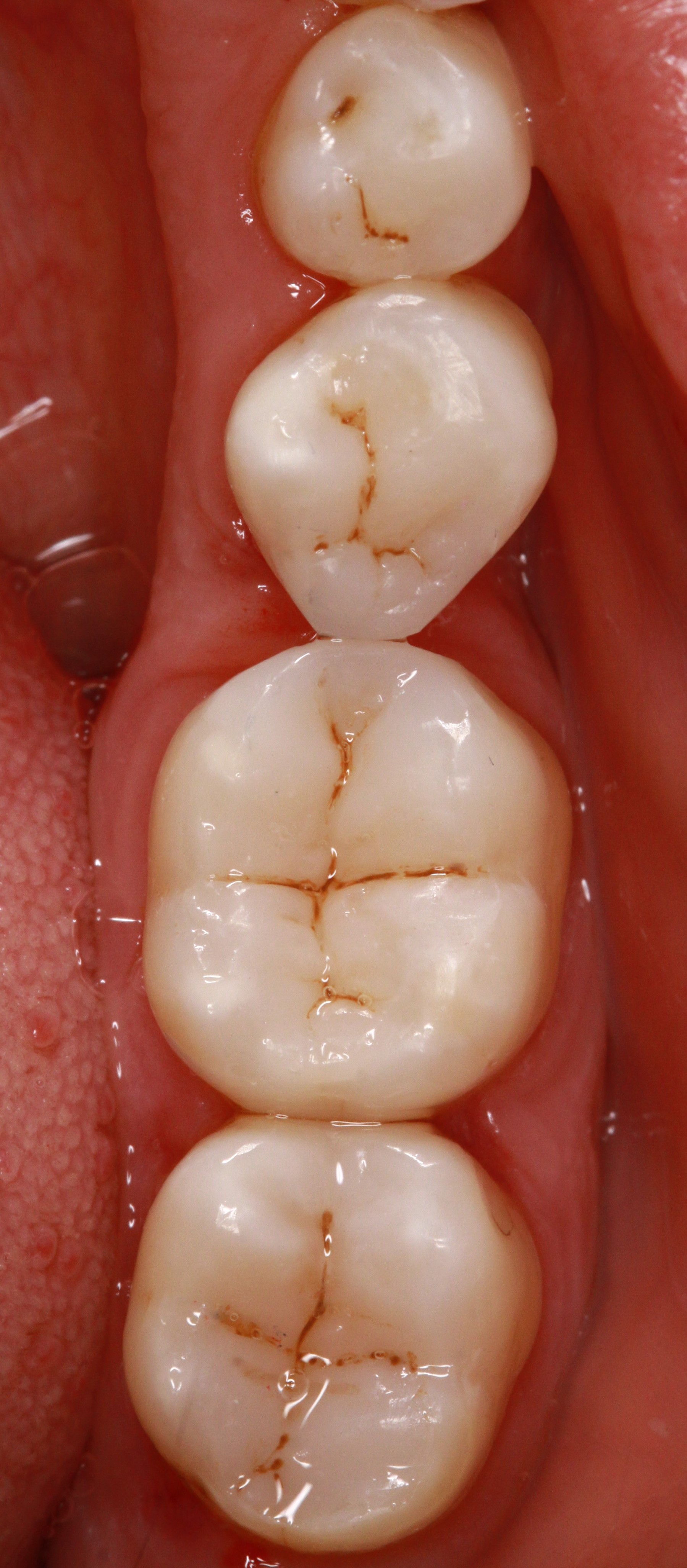Bridges
Bridges are used for replacing single or several missing teeth. Bridges are generally fixed but, in specific cases, also removable restorations (telescope bridges). Bridges are differentiated as single-span or long-span bridges according to the number of separate edentulous ridge segments they bridge. They can be supported on teeth, purely on implants (implant-supported bridges) or on teeth and implants (hybrid bridges)
Bridges are often retained on their anchors/abutments by (anchor-, abutment) crowns, but can also be retained using, e.g. inlays (inlay bridges, or adhesively bonded retention wings (adhesive bridge, acid-etched bridge, Maryland bridge) on one (single-winged bridge) or both (twin-winged bridge) adjacent teeth. Special systems use anchors adhesively bonded into holes drilled in the adjacent teeth.
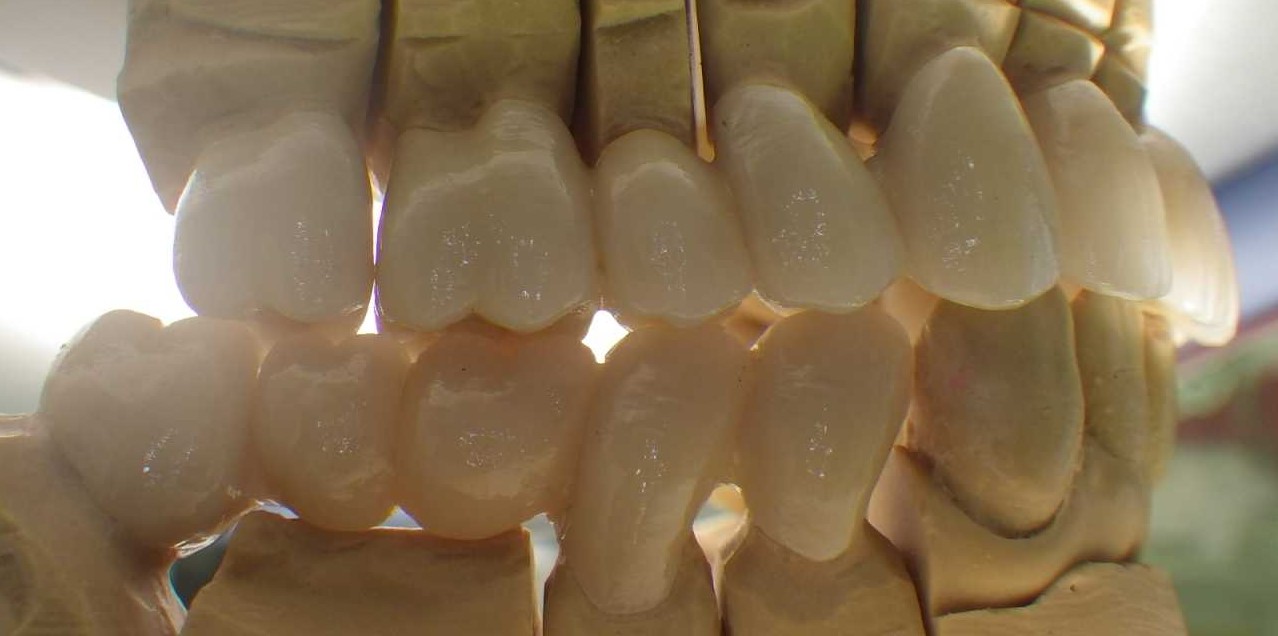 All-zirconia bridgework and crowns
All-zirconia bridgework and crowns
An essential component of a bridge is its pontic, which replaces at least one tooth. It is called a cantilever pontic if it is (in the case of a cantilever bridge) retained on one of the teeth adjacent to the space. Saddle bridges (fixed-fixed bridges) close tooth-bounded gaps between two anchors/abutments (teeth or implants) with one pontic retained on both abutments.
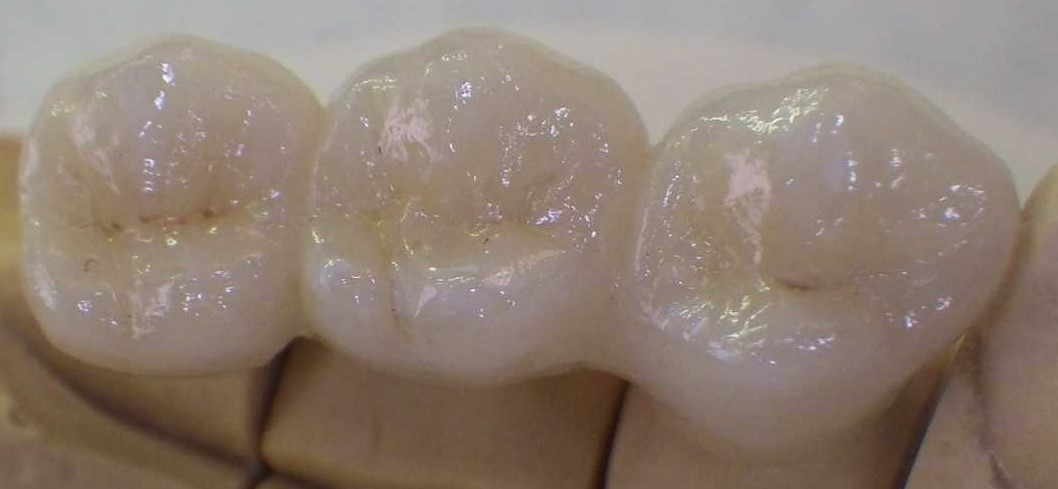 Zirconium dioxide free-end bridge on a stone model
Zirconium dioxide free-end bridge on a stone model
The junction between the abutment crown and pontic is called a "connector". Its dimensions (apart from length of the span) are a decisive factor in ensuring the fracture resistance of a bridge.
Depending on the distance or amount of contact of the bridge pontic to the alveolar mucosa, bridges are referred to as self-cleansing bridges (with a "self-cleansing" pontic), sanitary bridges or tangential bridges. The periodontally unhygienic saddle bridge is no longer a relevant option. The ovate pontic is generally a convex egg-shaped pontic (with oval/ellipsoidal cross section) that appears to emerge from the alveolar ridge in the same way as a natural tooth, which is an advantage in terms of aesthetics.
A common path of insertion must be found for all abutments involved in order to fit a bridge. This is achieved by means of parallel preparation, separation of the bridge (sectioned bridge) by a slide attachment or telescope crowns as well as with implants using angled abutments, if necessary.
The bridge pontics and abutment crowns are collectively known as "units" of a bridge. This means that a full bridge (involving all teeth in one jaw) can be a maximum of 16 units.
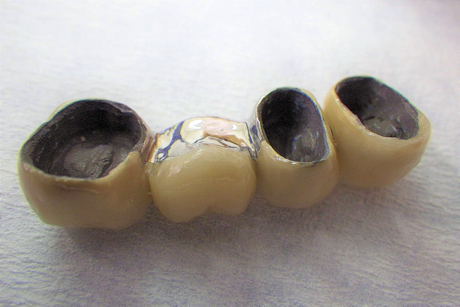 4 unit VMK bridge
4 unit VMK bridge
All the materials and procedures used with crowns can be used for fabricating and retaining bridges. Glass-fibre ribbons, with which pontics can be contoured and/or reinforced/retained, can also be used for temporary bridges.
For reasons of stability the number and total root surface of the bridge pontics must be at least as large as those of the teeth to be replaced. The flexibility of the bone segment of the mandible can lead to complications involving decementation of individual bridge abutment crowns.
Want to give it a try ...
... or need professional advice?
Get in touch with us or click Contact.
Word of the day
| English | German |
|---|---|
| water circulation unit | Wasserumlaufaggregat |
Focus text of the month
Composites also composite (from the Latin componere = to compose) are tooth-coloured filling materials with plastic properties used in dental treatment. In lay terms they are often referred to as plastic fillings, also erroneously sometimes confused with ceramic… Composites also composite (from the Latin componere = to compose) are tooth-coloured filling materials with plastic properties used in dental treatment. In lay terms they are often referred to as plastic fillings, also erroneously sometimes confused with ceramic fillings due to their tooth colour. After being placed in a cavity they cure chemically or by irradiating with light or a combination of the two (dual-curing). Nowadays, composites are also used as luting materials. The working time can be regulated with light-curing systems, which is a great advantage both when placing fillings and during adhesive luting of restorations. Dual-curing luting materials are paste/paste systems with chemical and photosensitive initiators, which enable adequate curing, even in areas in which light curing is not guaranteed or controllable. Composites were manufactured in 1962 by mixing dimethacrylate (epoxy resin and methacrylic acid) with silanized quartz powder (Bowen 1963). Due to their characteristics (aesthetics and advantages of the adhesive technique) composite restorations are now used instead of amalgam fillings.
The material consists of three constituents: the resin matrix (organic component), the fillers (inorganic component) and the composite phase. The resin matrix mainly consists of Bis-GMA (bisphenol-A-glycidyldimethacrylate). As Bis-GMA is highly viscous, it is mixed in a different composition with shorter-chain monomers such as, e.g. TEGDMA (triethylene glycol dimethacrylate). The lower the proportion of Bis-GMA and the higher the proportion of TEGDMA, the higher the polymerisation shrinkage (Gonçalves et al. 2008). The use of Bis-GMA with TEGDMA increases the tensile strength but reduces the flexural strength (Asmussen & Peutzfeldt 1998). Monomers can be released from the filling material. Longer light-curing results in a better conversion rate (linking of the individual monomers) and therefore to reduced monomer release (Sideriou & Achilias 2005) The fillers are made of quartz, ceramic and/ or silicon dioxide. An increase in the amount of filler materials results in decreases in polymerisation shrinkage, coefficient of linear expansion and water absorption. In contrast, with an increase in the filler proportion there is a general rise in the compressive and tensile strengths, modulus of elasticity and wear resistance (Kim et al. 2002). The filler content in a composite is also determined by the shape of the fillers.
Composite restorations Conclusion |

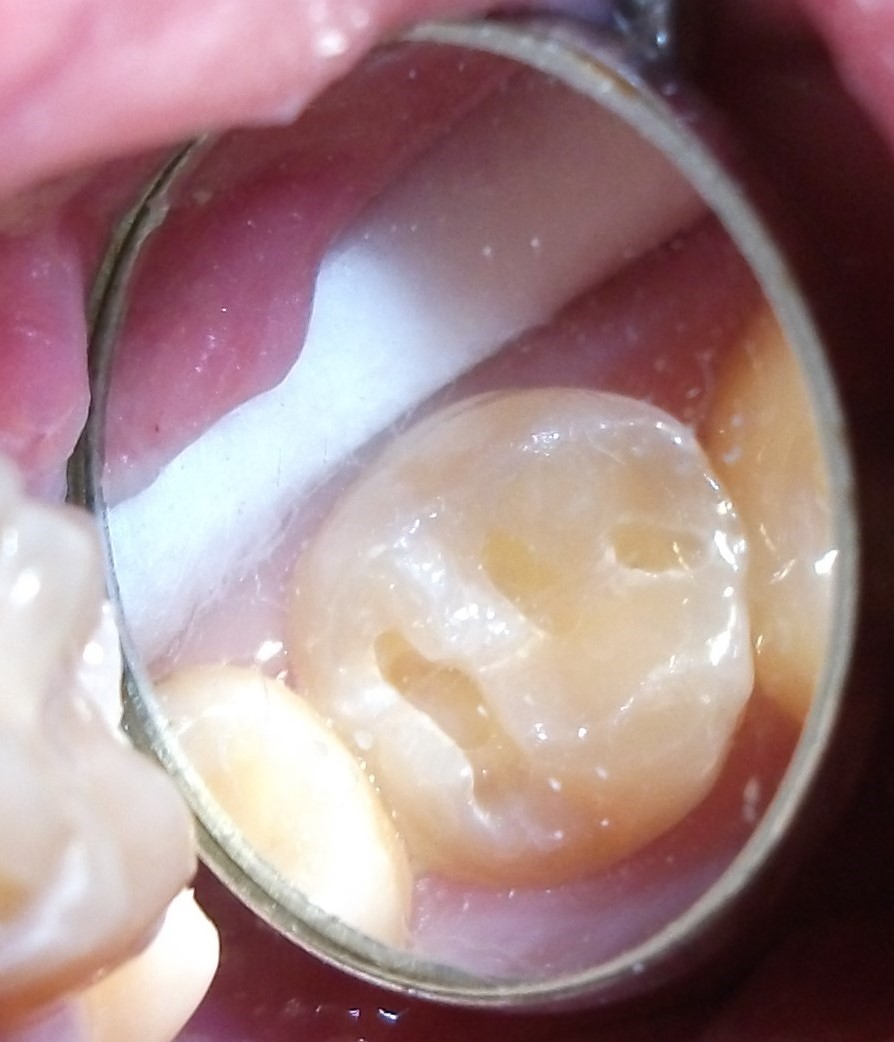 Minimally-invasive preparation and
Minimally-invasive preparation and 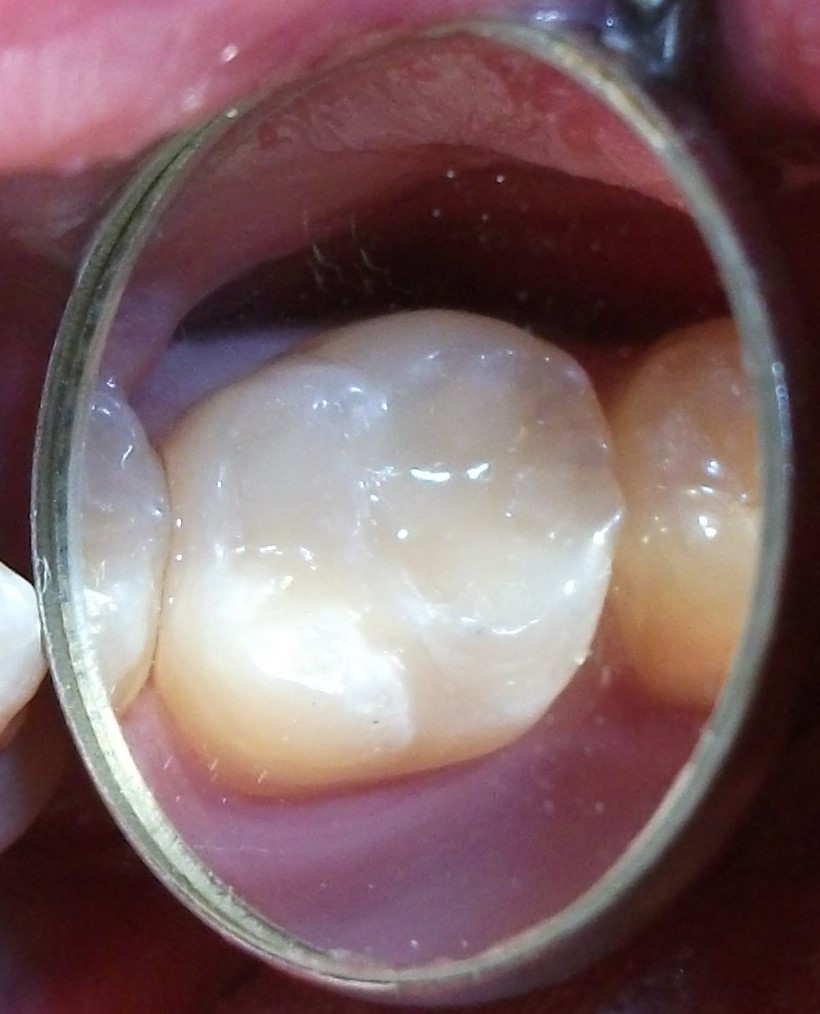 indiscernible composite restoration
indiscernible composite restoration